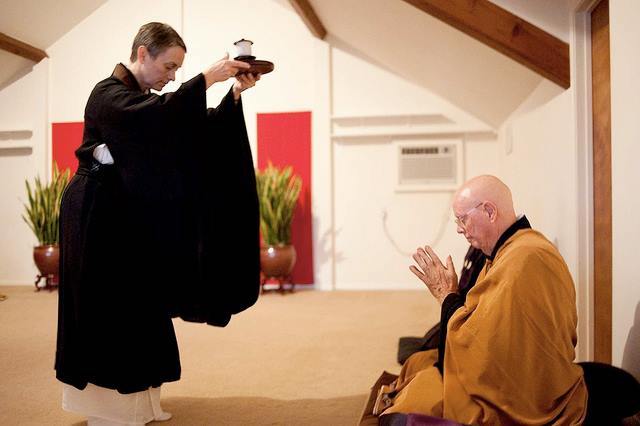
A talk given at the Tea Ceremony for Head Trainee Lailah Dainin Shima in 2019.
We’ve had more than two dozen tea ceremonies here at the Hazy Moon. At every one, Nyogen Roshi gives a talk like the talk Maezumi Roshi gave at tea ceremony about the sad state of training at monasteries before he left Japan. Even before Nyogen told me what to talk about I knew that I would talk about that too, because over time, the appreciation of this form, and how it was brought down to us, grows. Maezumi would talk about how on this evening in Japanese monasteries, the senior monk would give a talk about the Shuso’s koan, not the Shuso. And all the questions and answers at Shuso Hossen were scripted and tightly rehearsed. That might bring a measure of relief to the Shuso or head trainee, but in fact it shortchanged the dharma, the lineage, and everyone involved. It took the life right out of it.
You have to wonder what they were afraid of. What kind of risk did it represent to the image of Zen in Japan, or to their own self-image, if they hadn’t turned it into theatre, a reenactment of Zen, complete with props and costumes. Perhaps we know.
So when Maezumi came to America he would say that there was no Zen in Japan, or that there were no teachers, or that Zen in Japan was dead. He would say as much about most zen centers in America and it remains even more true today: “Why would you want to go there?” he would say about the largest Zen center in America. “There are no teachers there.”
Zen has always represented the living dharma, the living lineage of Buddhism, and Maezumi revived that in doing what we are doing here tonight and tomorrow, and every day. And so we have to know what it means to be a lineage center.
Several years ago someone told me that he wasn’t that interested in Maezumi because Nyogen Roshi was the only Roshi he’d ever known. I thought that sounded strange. You mean you don’t realize that what we do here is Maezumi’s dharma, Yasutani’s dharma, Koryu Roshi’s dharma, Dogen’s dharma, Bodhidharma’s dharma and Buddha’s dharma? That’s what Dogen said in the Shobogenzo, which he called “a record for people who learn in practice so that they can know the right Dharma of the Buddha’s lineage.” Do you notice that? “Learn in practice.” Not in the imitation of practice. Not in intellectual study or discourse, as safe as that might seem.
What makes lineage living or dead? The answer is always ourselves, drinking tea and eating cookies, participating fully in the ceremonies that honor all our teachers for holding up the living dharma, so we can see it, hear it, receive and maintain it.